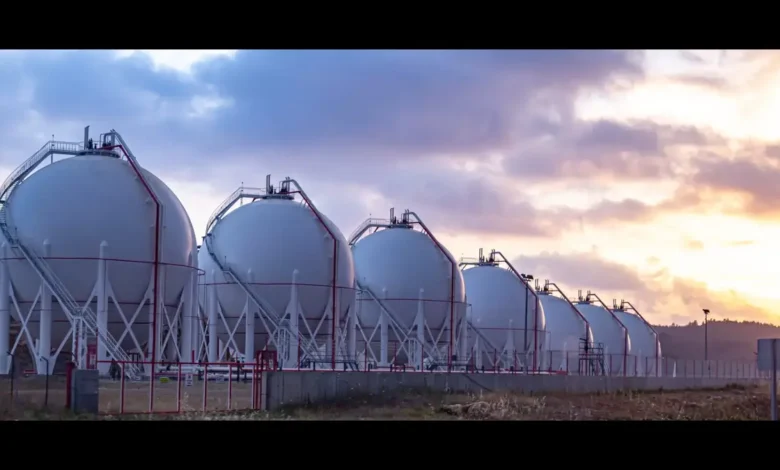Tank Storage and Fitting Solutions: Ensuring Safety and Efficiency in Fluid Management

In a world where industries rely heavily on large quantities of liquids—whether for industrial, agricultural, or commercial purposes—efficient tank storage and fitting solutions play a crucial role in ensuring safe and cost-effective fluid management. From bulk liquid storage for chemicals, oils, and fuels to water and agricultural products, the design, installation, and maintenance of storage tanks and their associated fittings can greatly impact operational efficiency, safety, and compliance with regulatory standards.
The Importance of Tank Storage Solutions
Tank storage solutions are designed to safely contain liquids and gases in a controlled environment, minimizing risks such as leaks, spills, and contamination. The primary purpose of tank fitting and storage is to store and preserve fluids in large quantities over time, often for distribution or for use in various industrial processes. These storage tanks come in various shapes, sizes, and materials, depending on the specific needs of the fluid being stored and the environmental conditions in which the tank is situated.
For example, fuel storage tanks are typically made from high-strength steel to withstand the pressure and chemical properties of fuels, whereas water storage tanks might be made from reinforced concrete or durable plastic. The materials used for tank construction must be compatible with the stored substance to prevent corrosion or degradation.
Beyond their role in storing liquids, tanks also serve as essential parts of supply chains and production processes. In industries such as food and beverage, pharmaceuticals, and chemicals, large tanks are used to store raw materials, ingredients, or finished products that require a controlled storage environment. This makes tank design and construction vital to maintaining product quality, regulatory compliance, and operational efficiency.
Types of Tank Storage Solutions
There are several types of tank storage solutions, each designed for specific use cases and industries. The most common include:
Aboveground Storage Tanks (ASTs): These are tanks installed above ground level and are typically used in industries where easy access for maintenance and inspection is required. ASTs are often used for storing chemicals, fuels, and water. Their design can vary from cylindrical to spherical, depending on the storage requirements.
Underground Storage Tanks (USTs): As the name implies, these tanks are buried beneath the surface and are commonly used for storing hazardous materials such as gasoline or oil. USTs are often chosen for their ability to offer greater protection against external factors such as weather and vandalism.
Vertical and Horizontal Tanks: Depending on the space available and the volume of the fluid to be stored, tanks can be vertical (tall and narrow) or horizontal (wide and low). Vertical tanks are commonly used for bulk storage in industries where space efficiency is important, while horizontal tanks are often easier to install and maintain.
Custom Tanks: In some industries, custom tank storage solutions are required. These tanks are designed to meet specific size, shape, and material requirements based on the unique characteristics of the fluid being stored and the environmental conditions.
Tank Fitting Solutions: Key Components for Safe Operation
Tank fittings are an integral part of the tank storage system. These components are designed to ensure the safe and efficient transfer, storage, and containment of fluids. They include a variety of parts, from valves and gauges to pressure relief systems and sealing solutions. Proper installation and maintenance of tank fittings are crucial to preventing accidents, leaks, and other operational inefficiencies.
Valves and Pumping Systems: Tank fittings often include valves to control the flow of liquids into and out of the tank. These can include ball valves, gate valves, and butterfly valves, each designed for different flow control requirements. In addition, pumping systems are typically integrated with tanks to facilitate the transfer of fluids from one location to another, either during storage or as part of a larger production process.
Level Indicators and Gauges: Monitoring the liquid levels inside a tank is critical for both operational efficiency and safety. Tank storage systems are often equipped with level indicators, such as sight glasses, float systems, and ultrasonic sensors. These devices help operators maintain proper tank levels, avoiding overflows or underutilization, which could lead to product loss or production delays.
Pressure Relief Systems: Many industrial liquids are volatile and prone to pressure fluctuations. To manage these pressures, tanks are equipped with pressure relief valves (PRVs) that ensure safe venting of excess pressure. This is especially important in the storage of hazardous materials, where excessive pressure could result in dangerous leaks or ruptures.
Seals and Gaskets: Proper sealing of tanks and fittings is essential for preventing leaks and contamination. Gaskets and seals are used to create airtight and watertight connections between tank components, ensuring that liquids remain contained and do not pose a risk to the environment or human health.
Compliance and Safety in Tank Storage and Fitting Solutions
One of the most important aspects of tank storage and fitting solutions is compliance with industry regulations and safety standards. Regulatory bodies such as the Environmental Protection Agency (EPA), Occupational Safety and Health Administration (OSHA), and other local or international organizations set strict guidelines for the design, construction, and maintenance of storage tanks.
These regulations cover a wide range of issues, including the materials used in tank construction, leak detection systems, spill containment measures, and emergency response plans. Non-compliance with these standards can result in hefty fines, environmental damage, and, in the worst-case scenario, catastrophic accidents.
To meet these standards, companies must ensure that their tank storage solutions are regularly inspected and maintained, and that all fittings are properly installed and functional. This includes verifying the integrity of pressure relief valves, monitoring systems, and seals, as well as ensuring that all necessary safety measures, such as spill containment and fire suppression systems, are in place.
Innovative Solutions in Tank Storage and Fitting Technology
As industries continue to evolve, so too do the technologies used in tank storage and fitting solutions. Advances in materials science, automation, and data analytics have led to the development of more efficient, durable, and intelligent tank storage systems. For instance, smart tank monitoring systems that use IoT sensors can track liquid levels, temperature, and pressure in real-time, sending alerts to operators if any irregularities are detected. This not only improves safety but also allows for predictive maintenance, reducing the risk of unexpected failures.
Additionally, new materials are being used in tank construction, such as composite materials and corrosion-resistant alloys, which offer greater longevity and reliability compared to traditional metals.
Conclusion
Tank storage and fitting solutions are critical to industries that rely on the storage and management of large quantities of liquids and gases. From ensuring the safe containment of potentially hazardous materials to improving operational efficiency, these systems play a vital role in maintaining production flow and regulatory compliance. By investing in the right tank storage solutions and ensuring that all fittings are properly designed and maintained, companies can safeguard their operations, protect the environment, and achieve greater overall efficiency.





